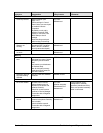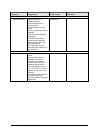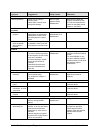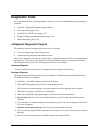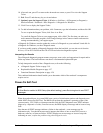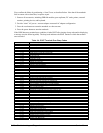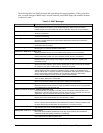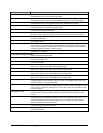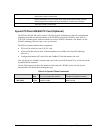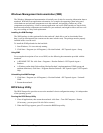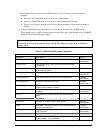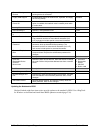
Beep Codes* POST Description
2-1-4-3 Display BIOS copyright notice.
2-1-4-4 Initialize MultiBoot.
2-2-1-1 Display CPU type and speed.
2-2-1-2 Initialize EISA board.
2-2-1-3 Test keyboard.
2-2-2-1 Set key click if enabled.
2-2-2-2 Enable USB devices.
2-2-3-1 Test for unexpected interrupts.
2-2-3-2 Initialize POST display service.
2-2-3-3 Display prompt "Press F2 to enter SETUP".
2-2-3-4 Disable CPU cache.
2-2-4-1 Test RAM between 512 and 640 kB.
2-3-1-1 Test extended memory.
Test extended memory address lines.
2-3-2-1 Jump to UserPatch1.
2-3-2-3 Configure advanced cache registers.
2-3-2-4 Initialize Multi Processor APIC.
2-3-3-1 Enable external and CPU caches.
2-3-3-2 Set up System Management Mode (SMM) area.
2-3-3-3 Display external L2 cache size.
2-3-3-4 Load custom defaults (optional).
2-3-4-1 Display shadow-area message.
2-3-4-3 Display possible high address for UMB recovery.
2-4-1-1 Display error messages.
2-4-1-3 Check for configuration errors.
2-4-2-3 Check for keyboard errors.
2-4-4-1 Set up hardware interrupt vectors.
2-4-4-2 Initialize Intelligent System Monitoring.
2-4-4-3 Initialize coprocessor if present.
3-1-1-1 Disable onboard Super I/O ports and IRQs.
3-1-1-2 Late POST device initialization.
3-1-1-3 Detect and install external RS232 ports.
3-1-1-4 Configure non-MCD IDE controllers.
3-1-2-1 Detect and install external parallel ports.
3-1-2-2 Initialize PC-compatible PnP ISA devices.
3-1-2-3 Re-initialize onboard I/O ports.
3-1-2-4 Configure Motherboard Configurable Devices (optional).
3-1-3-1 Initialize BIOS Data Area.
3-1-3-2 Enable Non-Maskable Interrupts (NMIs).
3-1-3-3 Initialize Extended BIOS Data Area.
3-1-3-4 Test and initialize PS/2 mouse.
3-1-4-1 Initialize floppy controller.
3-1-4-4 Determine number of ATA drives (optional).
3-2-1-1 Initialize hard-disk controllers.
3-2-1-2 Initialize local-bus hard-disk controllers.
3-2-1-3 Jump to UserPatch2.
3-2-1-4 Build MPTABLE for multi-processor boards.
3-2-2-2 Install CD-ROM for boot.
3-2-2-3 Clear huge ES segment register.
3-2-2-4 Fix up Multi Processor table.
3-2-3-2 Check for SMART Drive (optional).
3-2-3-3 Shadow option ROMs.
3-2-4-1 Set up Power Management.
3-2-4-2 Initialize security engine (optional).
3-2-4-3 Enable hardware interrupts.
3-2-4-4 Determine number of ATA and SCSI drives.
3-3-1-1 Set time of day.
3-3-1-3 Check key lock.
3-3-2-1 Initialize typematic rate.
3-3-3-1 Erase F2 prompt.
3-3-3-3 Scan for F2 keystroke.
3-3-4-1 Enter SETUP.
3-3-4-3 Clear Boot flag.
3-4-1-1 Check for errors.
3-4-1-2 Inform RomPilot about the end of POST.
3-4-1-3 POST done - prepare to boot OS.
3-4-2-2 Terminate QuietBoot (optional).
3-4-2-3 Check password (optional).
3-4-2-4 Initialize ACPI BIOS.
3-4-3-2 Prepare Boot.
3-4-3-3 Initialize SMBIOS.
3-4-3-4 Initialize PnP Option ROMs.
2-3-1-3
Service Manual Troubleshooting and Diagnostics 3-21



